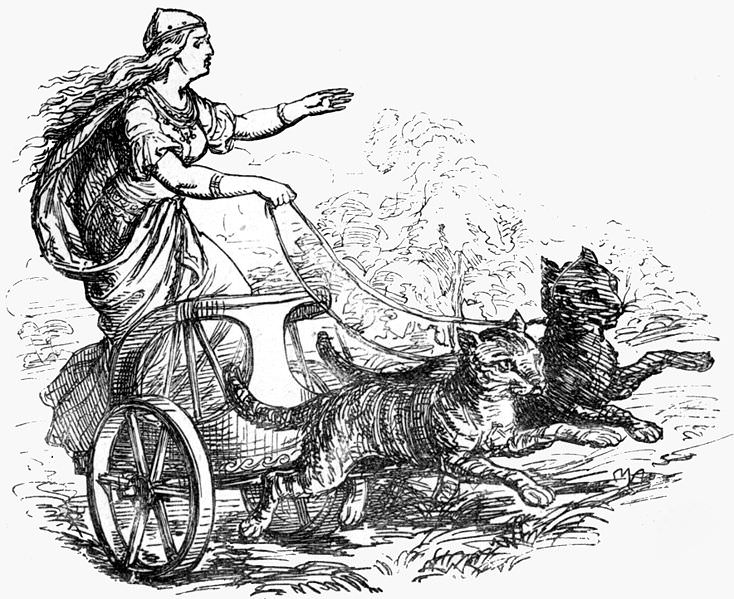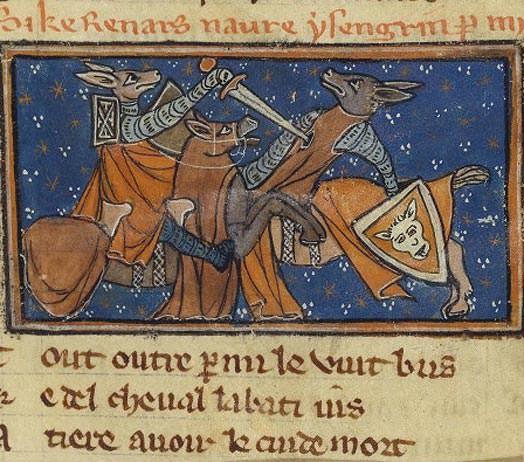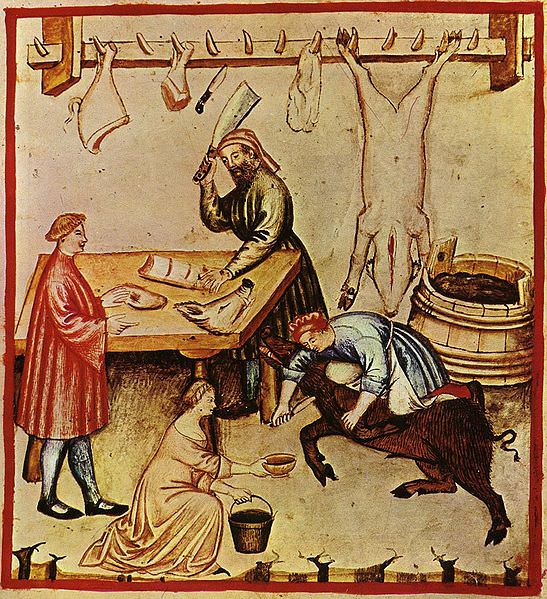How to Swing a Mouse: Intersections of Female and Feline in Medieval Europe
Though not persuasive enough by itself to forge a decisive affinity, similarity of physiology and temperament between women and cats did not escape notice in the Middle Ages.
Symbolism and Iconography of the Hawk in the Main Panel of the Bayeux Tapestry
Symbolism and Iconography of the Hawk in the Main Panel of the Bayeux Tapestry By Makra Péter Published Online (2001) Introduction: The main…
Kingdoms and Beasts: The Early Prophecies of Hildegard of Bingen
Kingdoms and Beasts: The Early Prophecies of Hildegard of Bingen Czarski, Charles M. JOURNAL OF MILLENNIAL STUDIES, VOLUME I, ISSUE 2, Winter (1998) Abstract The…
The beast within? Breaching human-animal boundaries in Anglo-Saxon paganism
Animals feature widely in early Anglo-Saxon and Scandinavian culture; both domestic and wild species are recovered in varying proportions from archaeological contexts, they appear in later literature, in personal names, and dominate indigenous art in the latter half of the the first millennium AD.
Dogs: God’s Worst Enemies?
In a broad survey of negative and hostile attitudes toward canines in pagan, Jewish, Christian, and Muslim traditions, the author posits that warm ties between humans and canines have been seen as a threat to the authority of the clergy and indeed, of God.
Walrus Hunting and the Ivory Trade in Early Iceland
The use of walrus ivory in Iceland’s past cannot be overlooked: Future research into settlement period sites should field further evidence of the nature of the ivory trade in medieval Iceland.
Freyja’s Cats: Perspectives on Recent Viking Age Finds in Þegjandadalur North Iceland
Although somewhat hidden, cats are there and quite prominent. One just needs to know how to find them and distinguish their meaning.
The Beast Within: Animals in the Middle Ages
The Beast Within: Animals in the Middle Ages By Joyce Salisbury Second Edition Routledge, 2010 ISBN: 978-0-415-78095-7 Publisher’s Synopsis: This important book offers…
Animaux domestiques dans la littérature narrative française au Moyen Âge
Animaux domestiques dans la littérature narrative française au Moyen Âge By Jens N. Faaborg Museum Tusculanum Press – e-Book, 2006 ISBN 87 635…
Potential Osteoarchaeological Evidence for Riding and the Military Use of Horses at Malbork Castle, Poland
Potential Osteoarchaeological Evidence for Riding and the Military Use of Horses at Malbork Castle, Poland By A. Pluskowski, K. Seetah and M. Maltby…
STUDIES ON ICHTHYOFAUNA FROM AN ARCHAEOLOGICAL EXCAVATION ON WOLIN-TOWN (SITE 1, PIT 6)
STUDIES ON ICHTHYOFAUNA FROM AN ARCHAEOLOGICAL EXCAVATION ON WOLIN-TOWN (SITE 1, PIT 6) By Zygmunt Chelkowski, Jarosław Filipiak and Bożena Chelkowska Acta Ichthyologica…
Man and nature in the Middle Ages
Man and nature in the Middle Ages By Christian Rohr Lecture given at Novosibirsk State University (2002) Introduction: If we try to define…
Draconic Creatures in Pictish Art
Draconic Creatures in Pictish Art By Alastair McBeath Dragon Chronicle: The International Journal Of Dragons and Dragonlore, No.22 (2002) Introduction: When I examined…
Ŭng Kol Pang, a 14th century Korean treatise on falconry
It is not easy to find out where, when and how falconry developed and spread into Korea.
Animals in English Wood Carving
Animals in English Wood Carving Druce, G. C. The Third Annual Volume of the Walpole Society, 1913-1914 (Oxford, 1914), Version 2 (August 2004) Abstract…
“Who Will Break The Deer?”: Lord and Huntsman in Medieval English Hunting Ritual
“Who Will Break The Deer?”: Lord and Huntsman in Medieval English Hunting Ritual By Ryan Judkins Hayes Forum Conference Paper (2009) Abstract: The…
Leonardo Da Vinci’s Representation of Animals in His Works
Leonardo studied both the anatomy and physiology of animals in order to render them with scientific precision.
Dogs in graves – a question of symbolism?
A 9th century female boat-grave is the starting point for a discussion about dogs in Scandinavian graves from c. 500-1100 AD.
Animal Trials: A Multidisciplinary Approach
Animal Trials: A Multidisciplinary Approach Dinzelbacher, Peter Journal of Interdisciplinary History, xxxii:3 (Winter, 2002) Abstract This contribution discusses a phenomenon that is ignored…
Birds in the Prayer Book of Bonne of Luxembourg
Birds in the Prayer Book of Bonne of Luxembourg By Charles Vaurie The Metropolitan Museum of Art Bulletin, v. 29, no. 6 (1971)…
Frederick’s Menagerie
Frederick’s Menagerie Refling, Mary A Conference Paper Read at the Second Annual Robert Dombrowski Italian Conference, September 17-18, (2005) Abstract Exotic animals have…
Ceramics in the Medieval Garden
Ceramics in the medieval garden Moorehouse, S. A. “Ceramics in the Medieval Garden” Garden Archaeology ed. Brown, A. E. Council for British Archaeology,…
Misconceptions about Beast Fables and Beast Tales, and the Role of the Fox in All of It
The reason why animals represent humans in these stories is because this gives the author a chance to express his or her opinion about certain people or societies. However, there are significant differences between beats tales and beast fables which make it impossible to mistake the one for the other.
The Middle Ages on the block: animals, Guilds and meat in the medieval period
Understanding the place of butchery in the medieval period requires a more in depth appraisal of the place of animals in medieval English culture. Fortunately, this period is perhaps one of the most interesting in terms of the lines of information available for this assessment. The rich historical evidence has led to research detailing the manufacture and uses of tools; the animals acquired and eaten in a number of different social contexts and accounts relating to the organisation of butchery.
Practical Chivalry: The Training of Horses for Tournaments and Warfare
Practical Chivalry: The Training of Horses for Tournaments and Warfare By Carroll Gillmor Studies in Medieval and Renaissance History, Vol.13 (1992) Introduction: Inventions harness…



